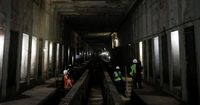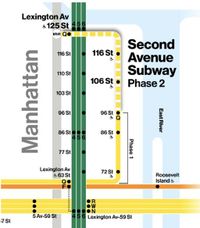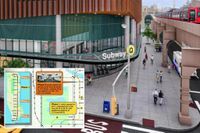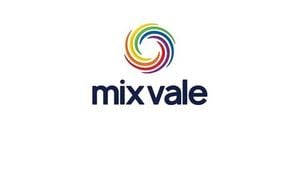After decades of anticipation, political wrangling, and false starts, the long-promised Phase 2 of New York City’s Second Avenue Subway is finally barreling forward—bringing hope, skepticism, and a hefty price tag to East Harlem. On August 18, 2025, at a special Monday morning meeting, Governor Kathy Hochul and the Metropolitan Transportation Authority (MTA) announced the approval of a $1.97 billion contract to launch the next chapter of this historic transit expansion. The winning bid, awarded to Connect Plus Partners—a joint venture between Halmar International and FCC Construction—marks the largest tunneling contract in the agency’s history, according to statements made by MTA Chair and CEO Janno Lieber.
The project’s ambitions are as grand as its budget. Phase 2 will extend the Q train 1.5 miles north from East 96th Street, adding brand-new stations at 106th, 116th, and 125th Streets. With this extension, the subway will finally reach deep into East Harlem, a neighborhood that, as Hochul put it, has been “long-neglected.” She declared at the board meeting, “It has been a century since the people of East Harlem were promised the new subway they deserve, and we are finally getting it done.”
The nearly $8 billion project (with a base budget of $6.99 billion and financing bringing it to approximately $7.7 billion) is projected to serve 110,000 riders daily. That’s a transformative number for a community where, at present, many residents must trek long blocks to reach the nearest subway. The new 125th Street station will offer transfers to the 4, 5, and 6 lines as well as Metro North, weaving East Harlem more tightly into the fabric of the city’s transit network.
But the path to this moment was anything but smooth. The Second Avenue Subway was first proposed in 1929, but the Great Depression and subsequent economic woes derailed those early dreams. In the 1970s, a tunnel was built between 110th and 120th Streets—only for construction to halt when New York City’s finances collapsed. Decades later, the city resumed work, and Phase 1 finally opened in 2017, extending the Q line to 96th Street at a then-eye-watering cost of $4.45 billion. That first phase, according to The New York Times, cost more per mile than almost any other transit project globally at the time.
Now, Phase 2 is set to shatter even those records, with a price tag of about $4 billion per mile. Critics have not been shy about questioning the cost, especially as the rest of the MTA system faces its own pressing repair needs. When asked by The New York Post why the agency was focusing on expansion instead of fixing existing problems, Lieber responded, “I reject the premise of the question. The MTA capital program has both state of good repair and expansion elements.” He defended the investment, calling it “by far the lowest cost per rider of any heavy rail project in the United States.”
Officials point to several cost-saving measures, including repurposing the 1970s-built tunnel for the 116th Street station—a move expected to save $500 million. Smaller tunnel crews and new labor efficiencies, enabled by advances in tunnel boring machine (TBM) technology, are projected to cut another $100 million. The newer TBM will not only bore the tunnel but also install precast concrete liners as it advances, eliminating the need for a separate crew behind the machine. “Not only are we boring the tunnel, but the same machine is coming in behind it and lining the tunnel with precast concrete,” Lieber explained, according to ENR. “That is how you really save.”
The contract also sets a 20% local hiring goal, with apprenticeships tied to City College of New York and the Charles B. Rangel Infrastructure Workforce Initiative. State Senator Cordell Cleare pushed for even more ambitious targets, suggesting “30% should be the floor.” Jamie Torres-Springer, president of MTA Construction & Development, assured the board that the agency is committed to “connecting East Harlem residents to opportunity.”
Political support for the project has been robust, if occasionally rocky. In June 2024, the project was thrown into doubt when Governor Hochul paused the city’s congestion pricing tolling program, a key source of funding. That program, which charges drivers to enter Manhattan below 60th Street, was expected to provide about $3.5 billion for the subway extension. After a period of uncertainty, congestion pricing resumed in January 2025, freeing up the necessary funds and allowing the project to proceed. Federal support has also been critical, with a $3.4 billion full funding grant agreement backing the effort. Hochul credited Senator Chuck Schumer and Representative Adriano Espaillat for their roles in steering federal dollars toward the project.
Construction is expected to begin later this year, with early street work in 2025 and heavy civil construction and tunnel boring to follow in 2026 and 2027. The tunnel boring machine will be ordered immediately, with launch slated for 2027. Revenue service is targeted for September 2032, when the gleaming new stations—designed with glass facades and airy entrances, according to renderings—will finally open to the public. The 125th Street station, in particular, will feature a Park Avenue entrance and be integrated into a new mixed-income housing development on the former site of a supermarket.
Transparency and risk management have been central themes for this phase. The MTA has completed extensive geotechnical surveys and early utility relocation to avoid the pitfalls that plagued Phase 1, where crews repeatedly struck uncharted utilities. The agency has also moved to control financial risk through an owner-controlled insurance program, expected to save $29 million, and performance and payment bonds to protect against contractor default.
Lisa Daglian, executive director of the Permanent Citizens Advisory Committee to the MTA, praised the agency’s efforts at transparency, telling The New York Times, “As the shovels get in the ground, as the project progresses, all eyes will be on this.” Jamie Torres-Springer echoed this sentiment, noting, “Using lessons learned from Phase 1, we’re excited to keep our momentum going and complete this contract better, faster and cheaper than ever.”
For East Harlem, the stakes are high. The new subway extension promises not only to shorten commutes and ease congestion on some of the nation’s most crowded lines but also to reconnect a community long left out of the city’s transit boom. As Lieber put it, “We’re not just extending a subway—we’re reconnecting a community.” With construction finally underway, the residents of East Harlem may soon see the promises of nearly a century fulfilled in steel, glass, and concrete beneath their feet.





